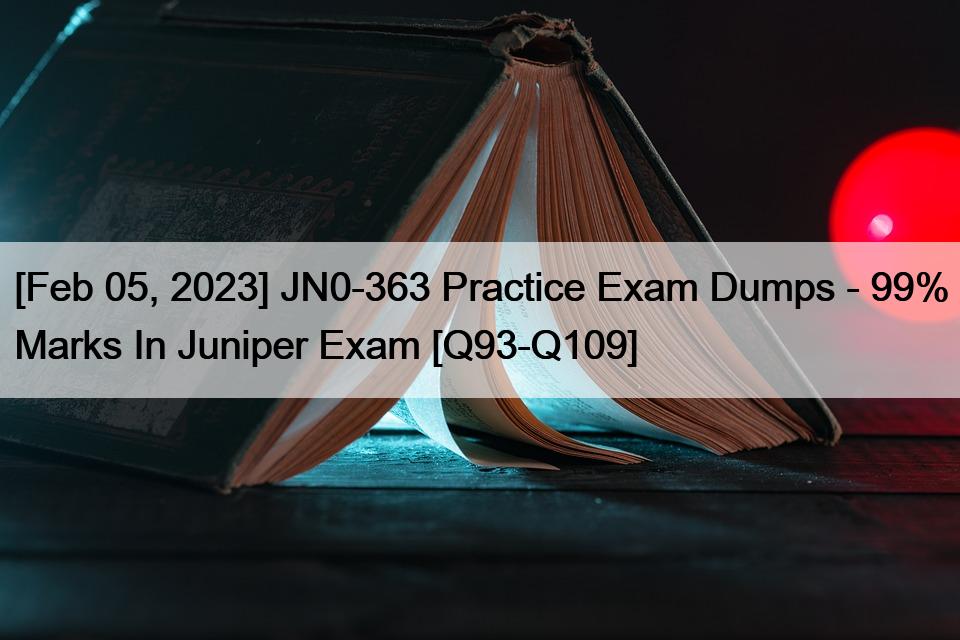[Feb 05, 2023] JN0-363 Practice Exam Dumps – 99% Marks In Juniper Exam
Updated Verified JN0-363 Q&As – Pass Guarantee or Full Refund
Juniper JN0-363 Exam Topics:
| Section | Objectives |
|---|---|
| Open Shortest Path First (OSPF) | – Identify the concepts, operation, or functionality of OSPF:
– Demonstrate knowledge of how to configure, monitor, or troubleshoot OSPF:
|
| Intermediate System to Intermediate System (IS-IS) | – Identify the concepts, operation, or functionality of IS-IS:
– Demonstrate knowledge of how to configure, monitor, or troubleshoot IS-IS:
|
| Multiprotocol Label Switching (MPLS) | – Identify the concepts, operation, or functionality of MPLS:
– Demonstrate knowledge of how to configure, monitor, or troubleshoot MPLS:
|
| Layer 2 Bridging or VLANs | – Identify the concepts, operation, or functionality of Layer 2 bridging for the Junos OS:
– Identify the concepts, benefits, or functionality of VLANs:
– Demonstrate knowledge of how to configure, monitor, or troubleshoot Layer 2 bridging or VLANs:
|
| Protocol-Independent Routing | – Identify the concepts, operation, or functionality of various protocol-independent routing components:
– Demonstrate knowledge of how to configure, monitor, or troubleshoot various protocol-independent routing components:
|
| IPv6 | – Identify the concepts, operation, or functionality of IPv6:
– Demonstrate knowledge of how to configure, monitor, or troubleshooting IPv6:
|
| Border Gateway Protocol (BGP) | – Identify the concepts, operation, or functionality of BGP:
– Demonstrate knowledge of how to configure, monitor, or troubleshoot BGP:
|
JN0-363 Real Valid Brain Dumps With 265 Questions: https://www.validbraindumps.com/JN0-363-exam-prep.html






